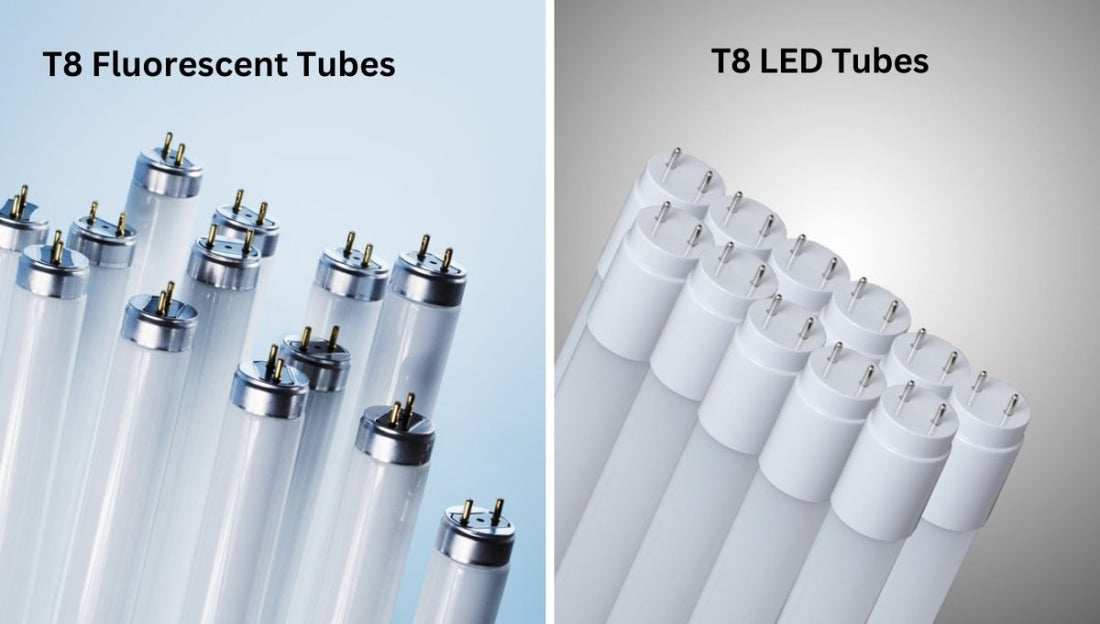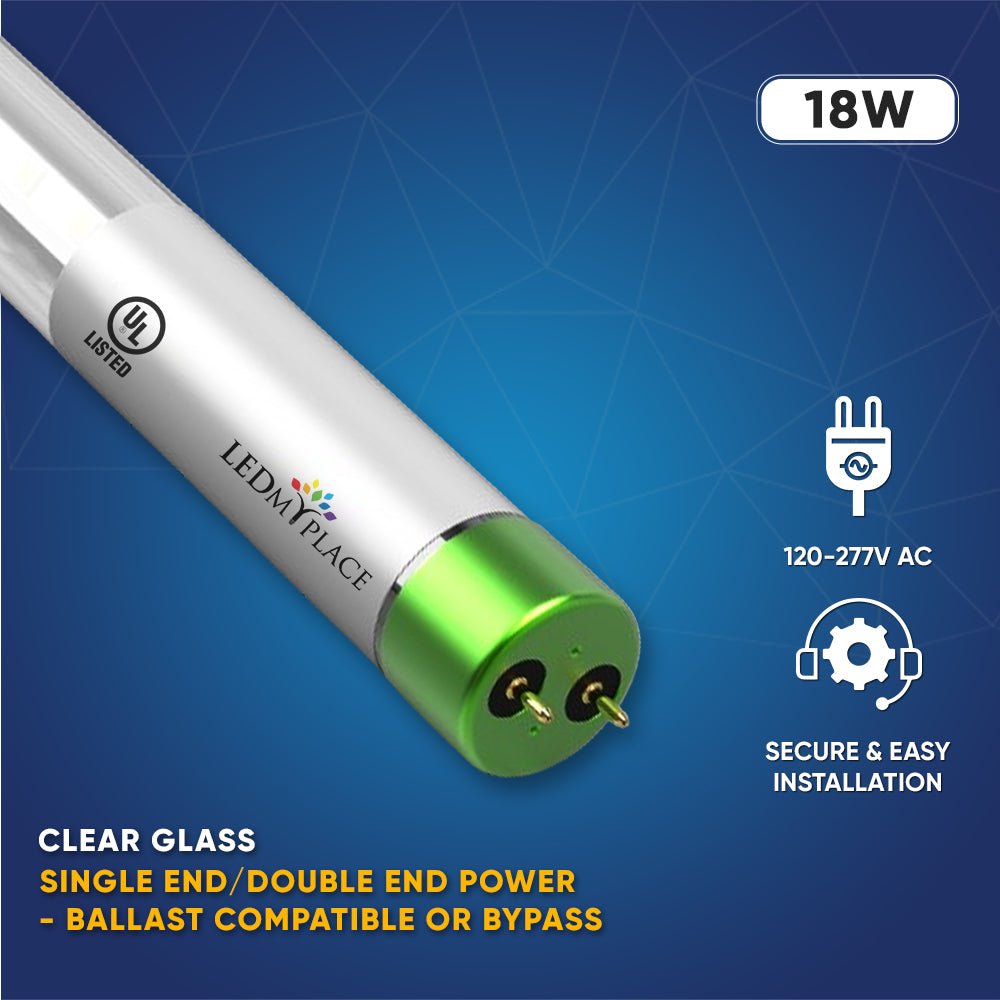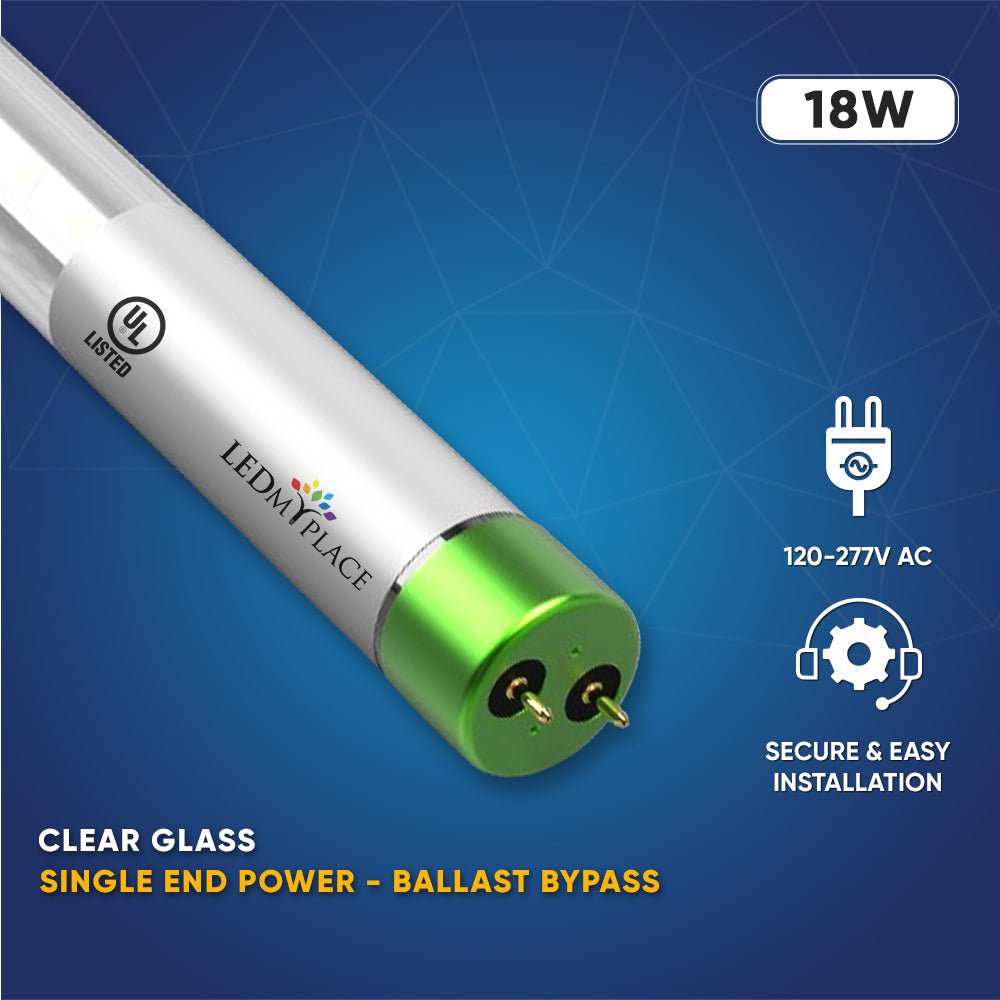Introduction
In the world of lighting, T8 tubes have been widely used for both residential and commercial purposes. However, with the advancement in technology, LED lighting has gained significant popularity as a more energy-efficient and eco-friendly alternative. This article aims to explore the differences between T8 fluorescent tubes and T8 LED lights, shedding light on their features, benefits, and drawbacks.
Table of Contents
|
1. Understanding T8 Fluorescent Tube Lights
T8 fluorescent tube lights have been a popular lighting option for many years. They operate by passing an electric current through mercury vapor, resulting in the emission of ultraviolet (UV) light. The UV light then interacts with the phosphor coating inside the tube, producing visible light. T8 fluorescent tubes require a ballast to regulate the electrical current.
2. The Rise of T8 LED Tube Lights
T8 LED tube lights have emerged as a viable alternative to traditional fluorescent tubes. LED stands for Light Emitting Diode, and this technology utilizes semiconductors to produce light. Unlike fluorescent tubes, LED lights do not rely on mercury vapor or phosphor coatings. Instead, they directly convert electricity into light, making them more energy-efficient.
3. Energy Efficiency Comparison
One of the significant advantages of T8 LED tube lights is their energy efficiency. LEDs consume significantly less energy compared to fluorescent tubes. On average, LED lights use around 30% to 80% less electricity, resulting in substantial energy savings and reduced electricity bills over time.
4. Lifespan and Durability
LED tube lights have a longer lifespan compared to fluorescent tubes. While fluorescent tubes typically last for around 10,000 to 15,000 hours, LED lights can last up to 50,000 hours or more, depending on the quality and usage. Additionally, LED lights are more durable as they do not contain fragile components like glass tubes and filaments, making them less prone to breakage.
5. Environmental Impact
When it comes to environmental impact, T8 LED tube lights are a greener choice. LED lights do not contain hazardous substances like mercury, which is present in fluorescent tubes. The absence of mercury makes LED lights safer to handle and dispose of, reducing the risk of environmental contamination.
6. Quality of Light
LED tube lights provide better quality of light compared to fluorescent tubes. LEDs offer improved color rendering, producing more accurate and vibrant colors. Additionally, LED lights have better light distribution, minimizing glare and providing a more uniform illumination.
7. Instant On and Flickering
T8 LED tube lights offer instant illumination without any warm-up time. They turn on immediately at full brightness, providing instant light in contrast to fluorescent tubes, which require a few seconds to reach their maximum output. Furthermore, LED lights eliminate the annoying flickering often associated with fluorescent tubes, creating a more comfortable and visually pleasing environment.
8. Cost Analysis: Initial Investment and Long-term Savings
While T8 LED tube lights may have a higher upfront cost compared to fluorescent tubes, they offer long-term savings. LED lights have a significantly lower energy consumption, resulting in reduced electricity bills. Moreover, the extended lifespan of LED lights means fewer replacements and maintenance costs in the long run.
9. Installation and Compatibility
Installing T8 LED tube lights is relatively straightforward. They can be directly retrofitted into existing fixtures designed for T8 fluorescent tubes, eliminating the need for rewiring or complex installation procedures. This compatibility makes the transition from fluorescent to LED lighting more convenient.
10. Retrofitting T8 Fluorescent Tubes with T8 LED Lights
For those who already have T8 fluorescent tube fixtures, retrofitting them with T8 LED lights is a viable option. Retrofit kits are available in the market, allowing for a seamless upgrade to LED technology without the need for complete fixture replacement.
11. Maintenance and Replacement
Maintaining and replacing T8 LED tube lights is generally easier compared to fluorescent tubes. LED lights have a longer lifespan, reducing the frequency of replacements. Additionally, LED lights are more robust and resistant to shocks and vibrations, minimizing the risk of damage during handling or transportation.
12. Color Temperature Options
LED tube lights offer a wide range of color temperature options, allowing users to select the desired ambiance and lighting effect. From warm white for a cozy atmosphere to cool white for a more vibrant and energizing environment, LED lights provide versatility in creating the desired lighting mood.
13. Dimming Capabilities
Unlike fluorescent tubes, many LED tube lights come with dimming capabilities. Dimmable LED lights allow users to adjust the brightness levels, offering greater control over the lighting atmosphere. This feature is particularly useful in settings where different lighting intensities are required, such as offices, restaurants, or homes.
14. Heat Emission
T8 LED tube lights produce significantly less heat compared to fluorescent tubes. This makes them more suitable for environments where temperature management is essential, such as refrigerated spaces or areas with sensitive materials. The reduced heat emission also contributes to energy efficiency, as less energy is wasted in the form of heat.
Conclusion
In conclusion, the difference between T8 fluorescent tube lights and T8 LED tube lights is significant. LED technology offers superior energy efficiency, longer lifespan, better quality of light, reduced environmental impact, and improved user experience. While the initial investment for LED lights may be higher, the long-term savings, along with the numerous advantages they provide, make them a worthwhile choice for both residential and commercial lighting needs.
Frequently Asked Questions (FAQs)
-
Are T8 LED tube lights compatible with existing T8 fluorescent fixtures?
- Yes, T8 LED tube lights can be directly retrofitted into existing T8 fluorescent fixtures without the need for rewiring or complex installation.
-
Do T8 LED tube lights require a ballast?
- No, T8 LED tube lights do not require a ballast. They operate using their built-in driver.
-
Are T8 LED tube lights more expensive than fluorescent tubes?
- T8 LED tube lights generally have a higher upfront cost but offer long-term savings due to their energy efficiency and extended lifespan.
-
Can T8 LED tube lights be dimmed?
- Many T8 LED tube lights come with dimming capabilities, allowing users to adjust the brightness levels as desired.
-
What is the average lifespan of T8 LED tube lights?
- The average lifespan of T8 LED tube lights ranges from 50,000 hours or more.

















































































